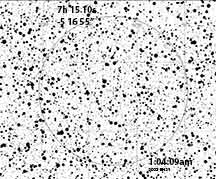
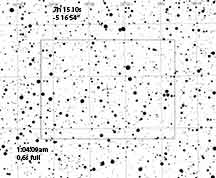
This event is faint and difficult, lasting only 0.6s, but if conditions are perfect, it should be detectable. Alt=45, Az=203 in SSW, in Monoceros. Below Procyon, left of the Belt of Orion. With luck it might be do-able from the foot of my driveway. The moon is 37 degrees away; better than the 23 degrees that haunted the Monte Rd event a night earlier and likely doomed it. The sky should be drier, darker, and the star is a bit brighter. But, the duration is only 0.6 s, with full drop in brightness.
 |
 |
I observed from home, from below my lower neighbor's deck. My PyOTE light curve doesn't show any hint of an occultation. Full moon 37 deg away. No hint of wind, but the star did blur from some times well after the event predicted time. Looks like a big south shift, since I was on the centerline and Kirk was halfway to the southern limit. He got a 0.53s positive, I have a miss. His positive is only a single integration, so it would still make sense with a almost spherical object to give a 0.53s event for Kirk, but a narrow miss for me. Among many others, there is a low single 8x reading that lines up perfectly with Kirk's central occultation time, but there are many others almost as deep.
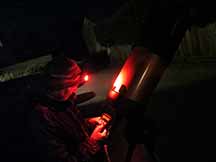 |
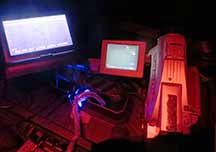 |
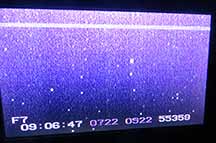 |
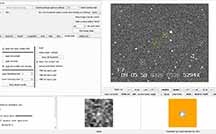 |
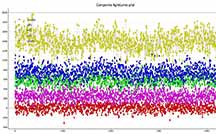 |
 |
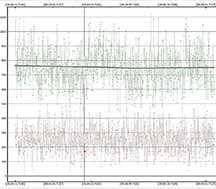 |
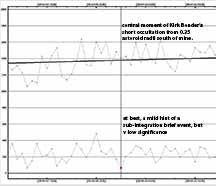 |
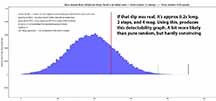 |
Learning experience: I tried Kirk Bender's PyMovie aperture of 2.4px instead of the 3.2px that I used above. The 3.2px masks did leave more sky around the stars, while the 2.4px did not. It made a big difference; at 2.4px (and again, with horizontal and vertical median filtering), the deepest drop is to zero and exactly at Kirk's central time for his occultation just 1/3 asteroid radius away. Indeed, we seem to be able to re-inforce each other's validity of an event, despite its faintness and shortness. The original analysis above is now on the external HDD as "-a". and the graphs I'm making from this second analysis are labeled with a "-b" appendix.
Kirk had to artificially split his 16x integrations in two, to get PyOTE to find his dip. I was at 8x, and so did not have to do so. I gave it a dip range of 2 to 7 and it found a detection, but a separation of distributions of only 0.8, not the minimum of 2.0 to be confident. The confidence instead must come because it lines up with Kirk's quite well, and duration 0.32s makes sense with Kirk's 0.53s for a predicted 0.6s max. Not perfectly confident, but the whole is better than just the sum of the parts, in this situation.
magDrop report: percentDrop: 92.4, magDrop: 2.803 too much noise; cannot calculate error bars
DNR: 2.85
D time: [09:04:09.6335]
D: 0.6800 containment intervals: {+/- 0.0701} seconds
D: 0.9500 containment intervals: {+/- 0.2064} seconds
D: 0.9973 containment intervals: {+/- 0.5437} seconds
R time: [09:04:09.9535]
R: 0.6800 containment intervals: {+/- 0.0701} seconds
R: 0.9500 containment intervals: {+/- 0.2064} seconds
R: 0.9973 containment intervals: {+/- 0.5437} seconds
Duration (R - D): 0.3200 seconds
Duration: 0.6800 containment intervals: {+/- 0.1129} seconds
Duration: 0.9500 containment intervals: {+/- 0.3048} seconds
Duration: 0.9973 containment intervals: {+/- 0.6521} seconds
Looks like I got a positive for 2002 RH21 on Jan 12. The drop is deep and near the predicted time, but it's for only one integration. I recorded at 16x from home, target looked too noisy at 8x. The target was 36 deg. from a 97% moon. In pyote I block integrated as usual and had it find an event, but it didn't find the one point drop, instead it found another much shallower drop 25 seconds earlier, whether I used manual D/R or min/max. There is a tool for single point drops in PyOTE, the "validate a potential single point event" button. I tried it for the single point near predicted, and it gave a NIE false positive graph which had a sigma distance of 5.8 (if greater than 2 the event is unlikely due to noise). However, the single point test does not give D/R, duration times, mag drop, etc. figures. The single point is at time 9:04:09.8800. I then restarted pyote, but I did a manual block integration, of size 8 for 16x, but I offset it by 4 points, so the single point drop became two points. Then it found the expected event and gave D/R times and a NIE sigma distance of 8.1. I tried multiple static aperture sizes in pymovie but still got an only one integration drop, a size of 2.4 giving the best numbers. Stats below.
magDrop report: percentDrop: 58.6 magDrop: 0.958 +/- 0.171 (0.95 ci)
DNR: 4.01
D time: [09:04:09.7466]
D: 0.6800 containment intervals: {+/- 0.0428} seconds
D: 0.9500 containment intervals: {+/- 0.1075} seconds
D: 0.9973 containment intervals: {+/- 0.2074} seconds
R time: [09:04:10.2804]
R: 0.6800 containment intervals: {+/- 0.0428} seconds
R: 0.9500 containment intervals: {+/- 0.1075} seconds
R: 0.9973 containment intervals: {+/- 0.2074} seconds
Duration (R - D): 0.5338 seconds
Duration: 0.6800 containment intervals: {+/- 0.0605} seconds
Duration: 0.9500 containment intervals: {+/- 0.1350} seconds
Duration: 0.9973 containment intervals: {+/- 0.2402} seconds
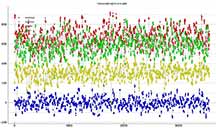 |
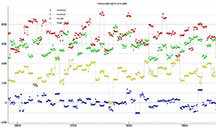 |
 |
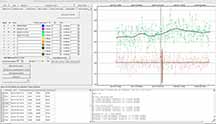 |
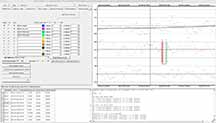 |
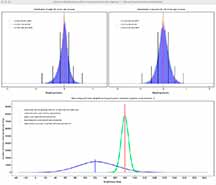 |
Kirk later sent this, below, in to IOTA
I appear to have a single-integration positive for this occultation. I recorded at x16 integration on my Watec camera and the resulting .csv from PyMovie has a deep one-integration dip near the predicted time. I did try various apertures in PyMovie but all resulted in a one-integration drop. Automatic block integration in PyOTE gives a one-point drop at 9:04:09.8800, predicted time was 9:04:08. Using the "validate a potential single point event" feature in PyOTE, gives a NIE sigma distance of 5.8. However, PyOTE does not give timings for a single point event. I then re-loaded the .csv in PyOTE and did a manual block integration, of size 8 for the x16 camera integration, but offset it by 4 points, and after block integration the drop had two adjacent points. PyOTE then found a 0.5338 sec. event (predicted max was 0.64 sec.) near the predicted time with an NIE sigma distance of 8.1 and PyOTE gave timings which I used for the attached report. Let me know what you think and if finding the timings this way is ok, otherwise how to report the timing of a one-point drop, if possible, and if you need more information. Rick Nolthenius observed the same occultation on a chord 1.5km away (RN: I removed my initial judgment of a 'miss' at my station and said so independently mailed to Norm Carlson of IOTA (1/26/25) that I now had a PyOTE detected positive using a smaller PyMovie aperture mask of 2.4px and would mail the report immediately)